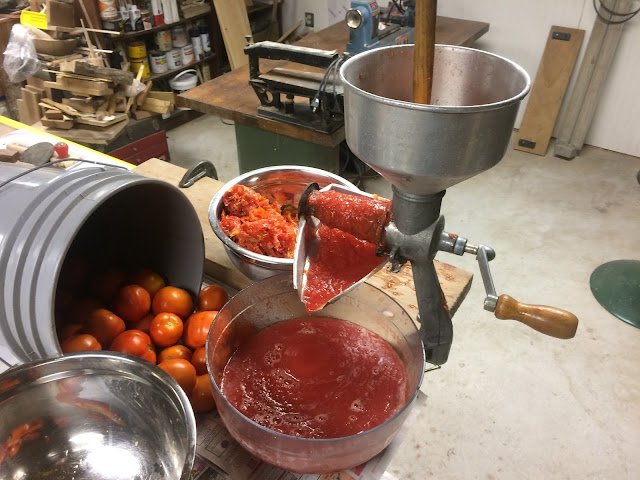 |
| Floradade Tomatoes Ripening Nicely But Leaves Drying Up |
 |
| Super Roma Tomatoes Producing Well But Leaves Also Withering |
 |
| Sauce Tomatoes: 2017 |
 |
| Squeezo Processor With Sliced Tomatoes Placed in Funnel, Juice and Pulp Slide Down the Chute and Seeds/skin Comes Out the End |
 |
| Squeezo Closeup From a Different Angle |
 |
| Bowl Full of Tomato Skins and Seeds But With Some Pulp |
 |
| Second Squeezing of Above, Now Much Drier and a Third the Volume |
 |
| The Colander We Found That Works Best for Bailing Soup Stock from Sauce |
 |
| Canning Technique Where Water Boils under the Plate that Holds the Jars and the Cover Traps Steam to Envelop the Jars. |
 |
| Difference: Ladled the Left Quart While Tomato Sauce Was Boiling. Right Ladled Out of the Colander With No Boiling (Steam Bubbles Pumps Some Pulp Through the Colander Holes) |
 |
| First Batch (18 Quart Pot) of Soup Stock and Tomato Paste (5:3 Ratio) |
 |
| First Batch of Soup Stock and Ketchup (12 Quarts: 12 Pints or 2:1 Because Vinegar Is Added to Make Ketchup) |











































